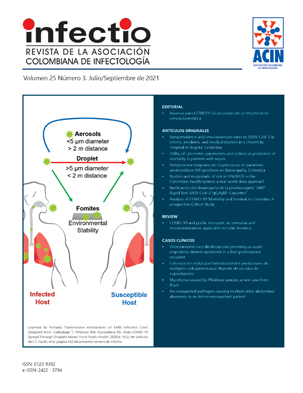Burden and magnitude of risk in HIV/AIDS in the Colombian health system: a real-world data approach
Contenido principal del artículo
Resumen
Aim: To assess the epidemiological situation of people living with HIV and AIDS (PLWHA) in the municipalities and regions of Colombia in 2018. Materials and methods: A cross-sectional study was conducted with secondary data from the High-Cost Diseases Fund from February 1st, 2018 to January 31st, 2019. We included sociodemographic, clinical variables, and related to geographic location. We calculated incidence, prevalence, and mortality according to the Colombian geographical regions, department and municipality of residence. Crude and age-standardized rates were estimated. Results: By 2018, 10,930 new cases of PLWHA were reported, being more frequent in males, aged between 25 to 49 years. 39.32% were reported with AIDS and 35.27% had undetectable HIV viral load. During 2018, there are 109,056 PLWHA in Colombia. The highest age-standardized incidence and prevalence were reported in Florencia (Cauca) (354.28 per 100,000 and 3.32 per 100people, respectively). The age-standardized incidence rate was 22.12 per 100,000 population (95% CI 21.71- 22.54). Age-standardized prevalence and mortality were 0.23 per 100 population (95% CI 0.22-0.23) and 3.78 per 100,000 population (95% CI 3.61-3.96), respectively. Conclusion: Different strategies should be implemented to improve the identification of risk factors in the population, especially in some regions of Colombia and prevent transmission.

